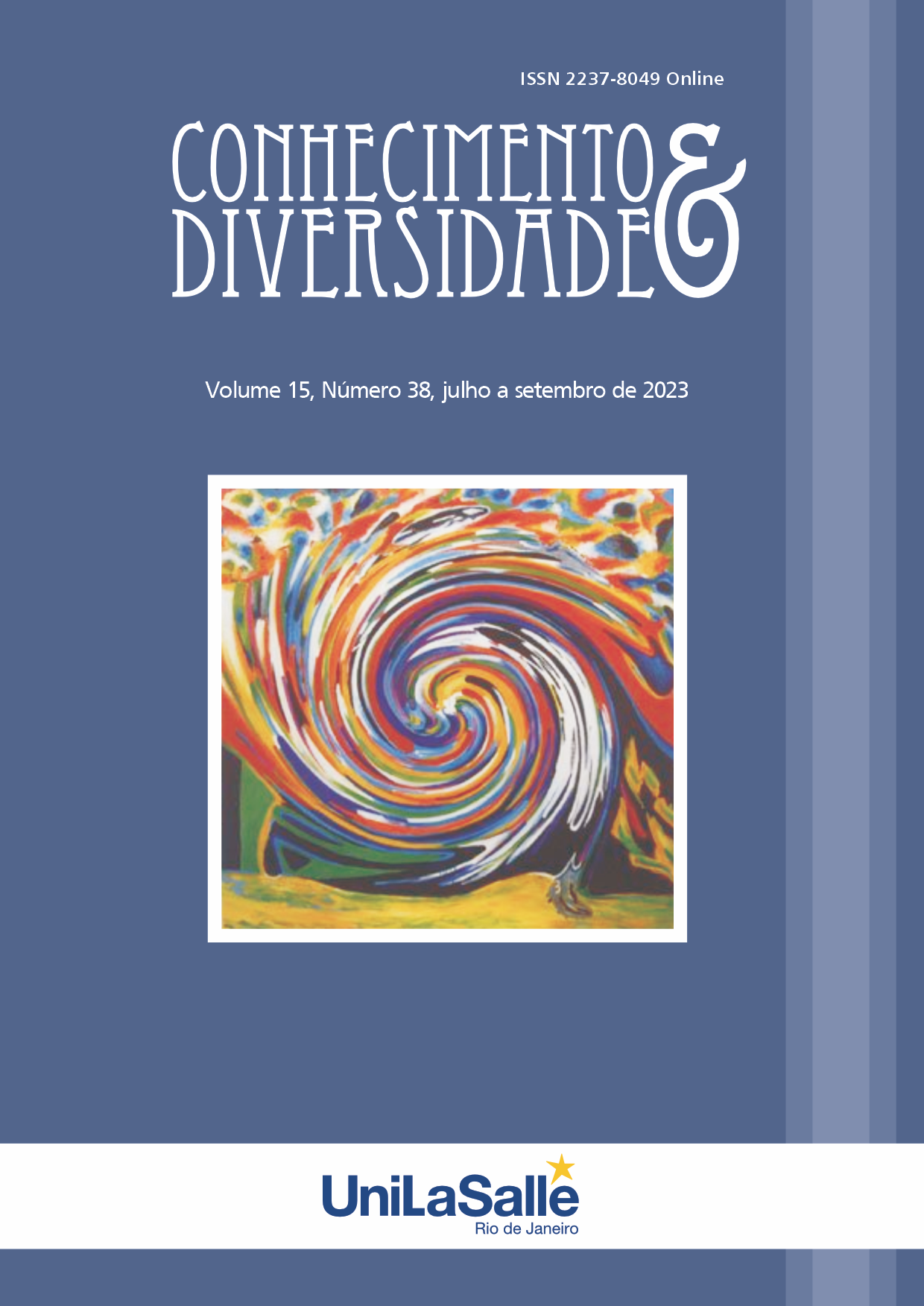HIGH SCHOOL STUDENTS’ PERCEPTIONS OF LEARNING ENGLISH VOCABULARY THROUGH GAMES
DOI:
https://doi.org/10.18316/rcd.v15i38.11043Keywords:
Games. Teaching. Vocabulary. High school students.Abstract
Learning vocabulary is a crucial part of learning the English language. There are several methods that teachers might employ when teaching vocabulary to students, especially high school students. One of these methods is to teach vocabulary more efficiently by utilizing educational games. The investigation in this research focused on learning vocabulary in a high school. The research found students’ perspectives towards the games used to teaching and learning vocabulary to students at Binh Hung Hoa High School in Ho Chi Minh City. The participants were 120 students in Grade 10 and 11 who were between 16 and 17 years old, and all of them were nonnative speakers, and 10 teachers who are in charge of teaching in this school. The writer conducted a case research, questionnaire was delivered to the students at the end of the course to get their perspectives towards learning English vocabulary through games. Besides, 10 teachers were interviewed about using games in teaching English vocabulary. The study found that using educational games as a learning and teaching strategy with young students boosted information acquisition and retention and offered students a chance to understand how their learning was used in the real world. This is also simple and enjoyable for students, allowing them to get familiar with a few words without having to recall them word by word or grow bored. This research advises employing educational games in a more inventive way when teaching vocabulary to students.
References
Aliaga, M., & Gunderson, B. (2000). Interactive Statistics. Saddle River, 3-15
Denzin, N. K., & Lincoln, Y. S. (2000). Handbook of Qualitative Research. Thousand Oaks: Sage Publications, Inc.
Griffee, D. T. (2012). An Introduction to Second Language Research Methods: Design and Data. Berkeley, CA.: TESL-EJ Publications
Hammer, J. (2008). The Practice of English Language Teaching. England: Pearson
Kealey, D. J., &Protheroe, D. R. (1996). The effectiveness of cross-cultural training for expatriates: An assessment of the literature on the issue. International Journal of Intercultural Relations, 20(2), 141-165
Longman. http://dx.doi.org/10.1093/elt/ccp007
Lewis, G. (1999). Games for children. New York: Oxford University Press.
Rixon, S. (1981). How to use games in language teaching. London: Macmillan.
(10) Uberman, A. (1998). The use of games for vocabulary presentation and revision. Forum, 36(1), 20-27.
Elyas, T., & Alfaki, I. (2014). Teaching vocabulary: The relationship between techniques of teaching and strategies of learning new vocabulary items. English Language Teaching, 7(10), 40–56. https://doi.org/10.5539/elt.v7n10p40
Carrier, M., & the Centre for British Teachers. (1985). Take 5. Games and activities for the language learners . GB: Nelson and Sons Ltd.
Hadfield, J. (1998). Elementary vocabulary games. Harlow: Pearson Education Limited. September 11, 2013, from http://exchanges.state.gov/forum/vols/vol36/no1/p20.htm
Wright, A., Betteridge, D., & Buckby, M. (2005). Games for language learning (3rd ed.). New York: Cambridge University Press.
Uberman, A. (1998). The use of games for vocabulary presentation and revision. English Teaching Forum, 36(1), 20-27. Retrieved September 11, 2013, from http://exchanges.state.gov/forum/vols/vol36/no1/p20.htm
Ersoz, A. (2000, June). Six games for EFL/ESL classroom. The Internet TESL Journal, 6(6), retrieved February 11, 2005 from http://iteslj.org/Lessons/Ersoz-Games.html
Gardner, H. (1999). Intelligence reframed: Multiple intelligences for the 21st century.
New York, NY: Basic Books.
Hadfield, J. (1999). Intermediate vocabulary games. Harlow, Essex: Longman.
Jacobs, G. M., & Kline Liu, K. (1996). Integrating language functions and collaborative skills in the second language classroom. TESL Reporter, 29, 21-33.
Johnson, D. W., Johnson, R. T., & Stanne, M. B. (2000). Cooperative learning methods: A meta-analysis. Cooperative Learning Center, University of Minnesota. Retrieved February 12, 2006, from http://www.co-operation.org/pages/cl-methods.html.
Kodotchigova, M. A. (2002, July). Role play in teaching culture: Six quick steps for classroom implementation. Internet TESL Journal, 8(7). Retrieved February 13, 2006, from http://iteslj.org/Techniques/Kodotchigova-RolePlay.html
Krashen, S.D. (1985). The input hypothesis: Issues and implications. New York: Longman.
Lee, S. K. (1995, January-March). Creative games for the language class. Forum, 33(1), 35. Retrieved February 11, 2006 from http://exchanges.state.gov/forum/vols/vol33/no1/P35.htm
Lee, W. R. (1979). Language teaching games and contests. Oxford: Oxford University Press.
Nguyen Thi Thanh Huyen & Khuat Thi Thu Nga. (2003, December). Learning vocabulary through games. Asian EFL Journal, 5(4). Retrieved February 13, 2006, from http://www.asian-efl-journal.com/dec_03_sub.Vn.php
Orlick, T. (2006). Cooperative games and sports: Joyful activities for everyone. Champaign, IL: Human Kinetics.
Richard-Amato, P. A. (1988). Making it happen: Interaction in the second language classroom: From theory to practice. New York: Longman.
Rixon, S. (1981). How to use games in language teaching. London: Macmillan.
Wright, A., Betteridge, D., & Buckby, M. (2005). Games for language learning (3rd ed.). New York: Cambridge University Press.
Riedle C. Web 2.0: helping reinvent education / C.Riedle, 2008. – Available at: http://www.thejournal.com/articles/21907.
Downloads
Published
Issue
Section
License
Copyright (c) 2023 Vo Tu Phuong, Nguyen Thi Phi Phuong

This work is licensed under a Creative Commons Attribution 4.0 International License.
As recommended by the Public Knowledge Project, RCD adopts for its articles a CREATIVE COMMONS Attribution CC BY 4.0 license.
This license allows others to distribute, remix, adapt and build upon your work, even commercially, as long as they credit you for the original creation.
This is the most appropriate license offered.
Recommended for maximum dissemination and use of licensed materials.



